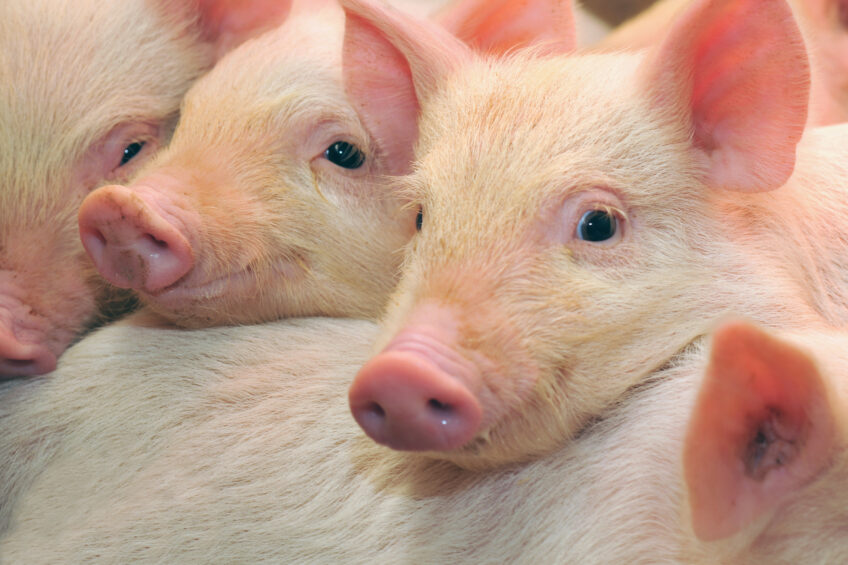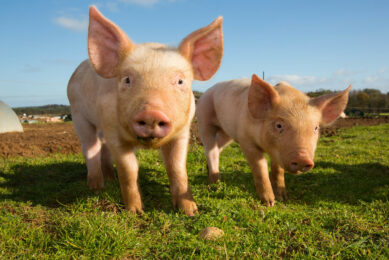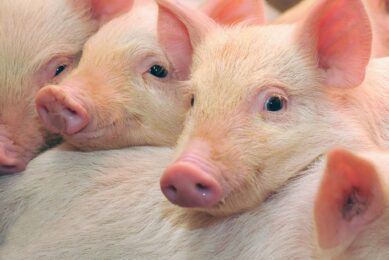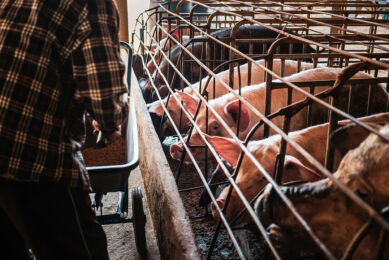ASF and viral threats: Understanding feed biosecurity in swine production

Outbreaks of African Swine Fever (ASF) and other viral pathogens have underscored the importance of comprehensive biosecurity measures that extend from ingredient sourcing to feed delivery.
Feed as a vector for viral transmission
The understanding that feed can transmit viral diseases represents a paradigm shift in swine health management.
“The global nature of feed trade combined with the environmental stability of major swine viruses creates a perfect storm for transboundary disease transmission,” explains Dr Francisco Domingues, Anitox global technical director of Swine Markets. “What we’ve learned from recent research is that feed biosecurity can no longer be an afterthought in swine production systems.”
A growing body of scientific literature confirms that feed ingredients can harbour and transmit economically devastating swine viruses. Multiple experimental studies have demonstrated that porcine epidemic diarrhea virus (PEDv), porcine reproductive and respiratory syndrome virus (PRRSv) and African Swine Fever virus (ASFv) can survive in feed components for extended periods under conditions simulating commercial transport.
In landmark transport simulation studies, researchers documented viral viability in feed ingredients over remarkable durations:
- 23-37 days for PEDv in soybean meal, vitamin D, lysine hydrochloride, and choline chloride
- 23 days for PRRSv in soy products
- Multiple weeks for ASFv during simulated transoceanic shipment
“These findings should fundamentally change how we think about feed security,” notes Dr Domingues. “We’re not just talking about theoretical risk – we have concrete evidence of viral persistence in common feed ingredients traveling across continents.”
The research goes beyond merely detecting viral presence in feed, having confirmed that contaminated feed can establish infection in naïve animals through natural feeding behavior. A minimum infectious dose of ASFv has been quantified as 10⁴ TCID₅₀, however, the median infectious dose in feed was 10⁶·⁸ TCID₅₀. While these doses are higher than those required in liquid matrices (minimum 10² TCID₅₀), they demonstrate that feed can serve as a viable route to initiate infection.
Impact of ASF and other viruses on global swine production
“The introduction of African Swine Fever virus has fundamentally altered the global swine industry landscape, with impacts that will be felt for years to come,” notes Dr Domingues. “What makes ASF particularly concerning is its combination of high mortality and absence of effective vaccines or treatments.”
The scale of this impact is particularly pronounced in Asia, home to over 50% of the world’s pig population. Following ASF introduction to China in 2018 and subsequent spread throughout Southeast Asia, the region experienced:
- Decimation of swine herds with near 100% mortality in affected populations.
- Dramatic reduction in breeding stock, compromising recovery capacity.
- Substantial increases in pork prices affecting consumer access.
- Rapid restructuring of production systems toward larger, more biosecure operations.
These impacts extend far beyond infected regions. As documented, the cascading effects of major outbreaks include disruptions to global meat supplies, shifts in international trade patterns and economic losses that reverberate throughout agricultural supply chains and rural communities.
While ASF has dominated recent headlines, swine producers face a complex viral landscape that includes other significant pathogens:
“The concurrent circulation of multiple viral threats creates compound challenges for producers,” explains Dr Domingues. “Control strategies must account for the unique characteristics of each pathogen while addressing common transmission pathways.”
The absence of an effective vaccine or treatment distinguishes ASF from many other swine diseases, placing extraordinary emphasis on prevention. This gap in the disease control toolkit makes understanding transmission pathways –including the role of feed – critical to developing effective biosecurity strategies.
Feed component risk profiles and mitigation strategies
“Understanding which ingredients pose the highest risk allows producers to implement targeted mitigation strategies,” states Dr. Domingues. “Not all feed ingredients carry equal risk. For instance, studies have shown that soy products demonstrate high viral survival, which helps to inform both sourcing decisions and treatment protocols.”

Feed sanitisers significantly reduced detectable viral RNA (PEDv, PRRSv, and SVV1) in soybean meal – an ingredient specifically highlighted in the research as a concern. Testing revealed effective viral reduction at both low (2 kg/MT) and high (3 kg/MT) inclusion levels, providing options for treating this high-risk ingredient. When treating high-risk ingredients like soybean meal, the research showed a significant interaction between application timing and treatment effectiveness. Post-contamination application (mitigation approach) resulted in substantially lower viral RNA levels compared to preventative treatment, suggesting that rapid response to known contamination in high-risk ingredients is particularly effective.
“Feed sanitisers are an important option for the industry, with some producers finding them to be non-negotiable in their biosecurity toolbox. We are not just trying to mitigate or reduce the viral DNA during the application or inside the feed mill. We need tools that can guarantee protection against recontamination until the point of consumption,” emphasises Dr Domingues.
Comprehensive feed mill biosecurity
As global swine production continues to face threats from viral pathogens like ASF, PED, and PRRS, feed biosecurity has become an essential component of comprehensive disease prevention strategies. The recognition that feed can serve as a vector for viral transmission has fundamentally changed how the industry approaches biosecurity.
“Publications documenting the aftermath of previous outbreaks have shown how difficult it is to clean up a feed mill after it has become contaminated with viruses, such as PEDv or even ASF. It can take months to get that feed mill clean again,” notes Dr Domingues. “The evidence is clear that feed represents a viable transmission route for major swine pathogens. As our understanding grows, so too must our approach to feed biosecurity. The future of sustainable swine production depends on recognizing and addressing this critical control point.”
Producers looking to further strengthen their operations’ biosecurity via feed sanitation should contact their Anitox Clean Feed Expert.
References available on request.





